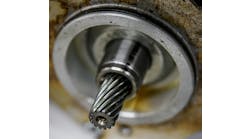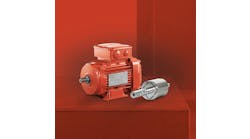Will Morris is category manager, Allied Electronics & Automation.
What have been the biggest improvements to motor and drives in the past five years?
Will Morris, category manager, Allied Electronics & Automation: The most important improvements to both have been in efficiency, which translates into energy savings. This has been in part due to energy-regulation changes, as well as manufacturers improving their designs. Motor efficiency represents the actual power you can get from an electric motor compared to its nameplate specifications.
Loss in power as you transmit power is inevitable, but motors are becoming more efficient every year. For example, a 5-hp standard efficient motor is about 84% efficient under a full load, as opposed to premium efficiency which is around 90%. The key takeaway here is that even a 6% difference such as this can translate to significant energy savings over the course of a year.
One way motor efficiency has been improved is by increasing the amount of copper and iron in motor windings. Solid-state variable-frequency (VFD) technology has improved the ability to match the power consumption of the motor to actual power needs. This furthers your energy savings, and it all boils down to financial improvements to the bottom line.
How have motors and drives benefitted from remote monitoring and connectivity?
Will Morris, category manager, Allied Electronics & Automation: Motors and drives can often be in remote locations or even inconvenient locations within a facility. Remote monitoring eases some of these hardships by enabling the user to receive data from a wide range of applications, all from one location. Remote monitoring has also enabled predictive maintenance, which in the case of motors or drives could enable you to receive early warning signs of problems before they happen to minimize the chance of unexpected downtime.
When will motors and drives become IT-friendly enough that engineers are no longer required for installation and operation?
Will Morris, category manager, Allied Electronics & Automation: Many drive manufacturers offer different levels of products that range from plug-and-play to highly advanced. The key emphasis from suppliers had been to match the customer with the correct product based on their needs. In addition to increased cost for customers, selecting an advanced drive for a basic application can cause problems for both the supplier and the customer in that the customer will pay for a product that they may not need and also may not understand.
This also will negatively impact the manufacturer, who will often have to support the customer through a difficult installation. I think the future will see more suppliers working on the correct solution for the customer and not necessarily the most advanced solution.
Tell us about one of your company’s state-of-the-art motors or drives.
Will Morris, category manager, Allied Electronics & Automation: Rare earth metals are a major component of most motors and are significantly constrained by global logistic issues, and they require foreign sourcing and are not a sustainable resource.
The ABB Baldor EC Titanium motor, for example, does not use rare earth metals. It uses synchronous reluctance technology—the conversion of electrical energy to mechanical—and ferrite magnets for a very high efficiency.






